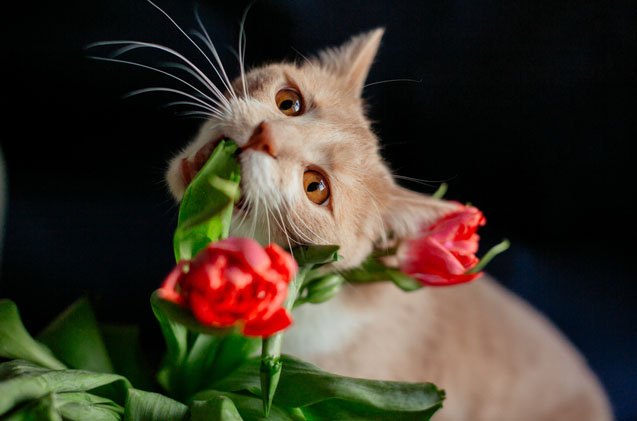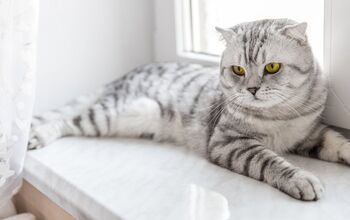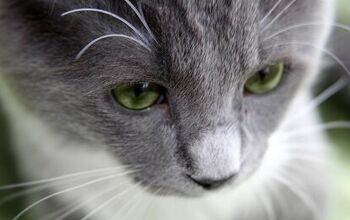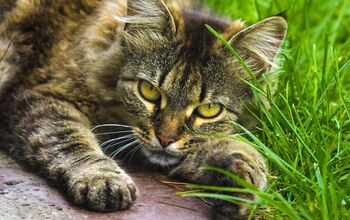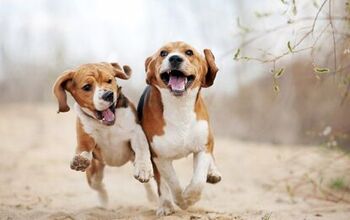Here’s What You Should Know About Feline Pica

Feline pica is a condition that causes a cat to eat non-edible items, such as plastic, rubber bands, wool, and paper, as a few examples. As you can imagine, this isn’t only unnatural, but also potentially dangerous.
Understanding pica and its causes, as well as its treatments, will help give you the tools necessary to stop your kitty from consuming things that he shouldn’t.
Related: Why Do Cats Eat Grass?
What Could Cause Feline Pica?
There are several factors that may contribute to your kitty developing pica. These include:
- Nutritional deficiencies: An anemic kitty might eat his litter, and kitties who aren’t getting adequate nutrients from their diet might resort to eating a lot of plants. Also, some experts believe that if a cat isn’t getting enough fat or fiber through his diet, he may develop pica.
- Environmental conditions: A cat who is lonely and seeking attention, has experienced changes to his environment, or is bored might develop pica because he lacks environmental stimulation or he’s stressed by big changes.
- Medical conditions: Sometimes underlying medical problems are to blame for pica. These include feline immunodeficiency virus (FIV), hyperthyroidism, feline leukemia virus (FeLV), brain tumors, dental disease, parasites, and diabetes.
- Genetics: Certain breeds, such as Oriental breeds, may be more prone to developing pica.
What You Can Do
If you notice that your pet has started chewing on and swallowing non-food items, a trip to the vet’s office could help you target the cause and get your kitty back on track. If there is an underlying medical condition or a behavioral disorder causing the pica, your vet will help you address it.
Related: Top 5 Indoor Plants Poisonous To Cats
Here are a few steps that you can take to discourage your kitty from eating things that he shouldn’t:
- Replace the objects that your kitty typically chews on with safe cat toys that he can chew on instead. In addition to keeping your cat away from dangerous items by eliminating his access to them, you can also try feline deterrents like Bitter Apple. And if you notice your kitty eating something he shouldn’t, you can immediately remove the object and redirect his attention to something positive.
- Enrich your pet’s environment with cat trees and a variety of toys, and spend more time interacting with your pet so that he won’t feel lonely, anxious, bored, or stressed. A combination of physical and mental stimulation could allow your cat to release energy in a positive way, and this might help discourage his pica habits.
- Talk to your vet or consult with a qualified feline nutritionist to determine the best ways to enhance your pet’s diet if the pica is due to a nutritional deficiency.
- If your vet has determined that your kitty isn’t suffering from a medical condition that’s causing the pica, and if your own strategies haven’t worked to stop your cat from eating non-edible items, consulting with a feline behaviorist might help.
Never punish your kitty for exhibiting pica, as doing so could result in your cat becoming even more anxious and stressed.
Also, because pica could lead to intestinal obstruction when a kitty eats something that his body is unable to pass, it’s important to keep an eye out for symptoms like listlessness, vomiting, diarrhea, and constipation. If you notice these or other worrisome symptoms, consult with your veterinarian as soon as possible.
Tackling Pica Is Possible
Keep in mind that a cat exhibits pica when he develops a long-term habit of eating non-food items, so when it comes to stopping your kitty from eating things he shouldn’t, patience is key. Also remember that this is considered an obsessive-compulsive disorder, so in order to change your cat’s behavior, it’s recommend that you figure out the cause and work from there. Remain diligent and work closely with your veterinarian for the best results.

Lisa Selvaggio is a freelance writer and editor, and our resident cats-pert, with certifications in pet nutrition and pet first aid. She enjoys producing content that helps people understand animals better so they can give their pets a safe and happy home.
More by Lisa Selvaggio



